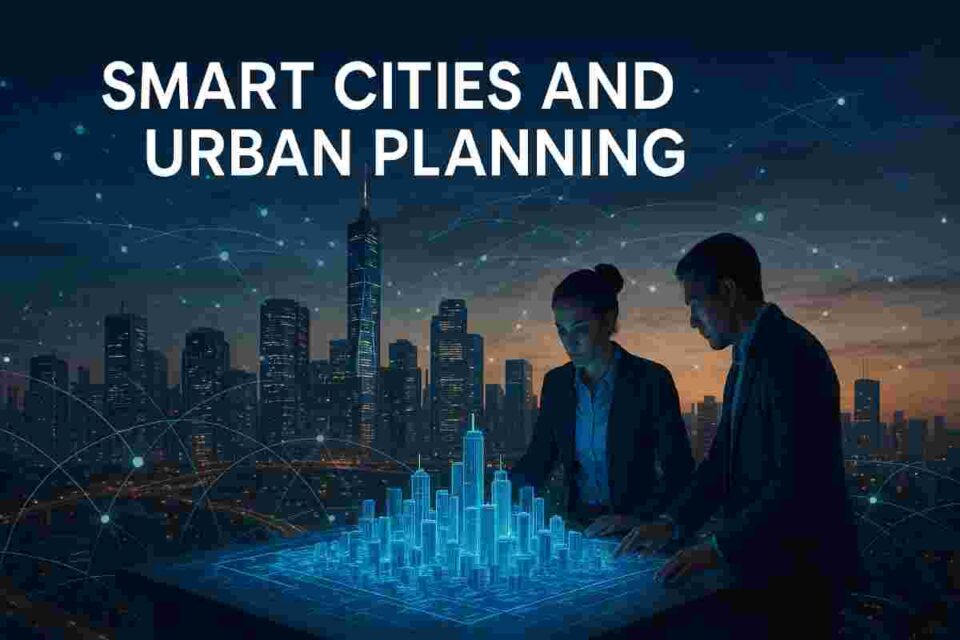Last Updated on October 24, 2025 by Admin
The Digital Transformation of Urban Landscapes
The concept of smart cities represents one of the most ambitious undertakings in modern urban development, fundamentally reimagining how technology can enhance the quality of life for billions of people worldwide. As global urbanization accelerates—with projections indicating that 68% of the world’s population will live in cities by 2050—the integration of digital infrastructure into urban planning has transitioned from futuristic concept to urgent necessity.
Smart cities leverage interconnected networks of sensors, data analytics, and automated systems to optimize everything from traffic flow and energy consumption to waste management and public safety. This technological integration creates urban environments that can adapt dynamically to changing conditions while providing city administrators with unprecedented insights into the complex systems that keep metropolitan areas functioning.
The evolution toward smart cities reflects a paradigm shift from reactive urban management to proactive, data-driven governance. Traditional city planning relied heavily on periodic studies and static infrastructure investments. Today’s smart cities utilize real-time data streams to make continuous adjustments that improve efficiency, reduce costs, and enhance citizen experiences across multiple urban systems simultaneously.
Revolutionary Transportation Systems and Mobility Solutions
Intelligent Traffic Management Networks
Smart transportation systems represent perhaps the most visible manifestation of urban technology integration. Cities like Barcelona and Singapore have deployed comprehensive traffic management platforms that utilize thousands of sensors embedded in roadways, intersections, and vehicles to monitor traffic patterns in real-time. These systems can dynamically adjust traffic signal timing, reroute traffic around accidents or construction zones, and provide commuters with optimal route recommendations through mobile applications.
Practice 15+ AI-generated technical and HR interview questions for Civil, BIM, QS, Planning, HSE and Construction roles. Get instant feedback, improved answers, a 7-day improvement plan, and a full PDF report. Designed exclusively for construction professionals.
One free full interview session included. No credit card required.
Adaptive traffic control systems use machine learning algorithms to predict traffic congestion before it occurs, analyzing historical patterns, weather conditions, special events, and real-time vehicle density data. The result is traffic flow optimization that can reduce commute times by 20-30% while simultaneously decreasing fuel consumption and vehicle emissions across entire metropolitan areas.
Public transportation integration has evolved beyond simple route scheduling to encompass predictive maintenance, dynamic capacity allocation, and seamless multimodal connectivity. Cities like Helsinki and Vienna have implemented unified mobility platforms that allow residents to plan, book, and pay for various transportation options—including buses, trains, bike-sharing, and ride-sharing services—through single integrated applications.
Autonomous Vehicle Infrastructure
The preparation for autonomous vehicle deployment has become a critical component of smart city planning. Cities are installing vehicle-to-infrastructure communication systems that will enable self-driving cars to receive real-time information about traffic conditions, road hazards, and optimal routing. These communication networks will be essential for realizing the full potential of autonomous vehicles to reduce traffic congestion and improve road safety.
Smart parking systems utilize sensors and mobile applications to guide drivers to available spaces, reducing the time spent searching for parking while optimizing space utilization. Advanced systems can predict parking demand patterns and dynamically adjust pricing to encourage optimal distribution of parking usage throughout urban areas.
Advanced Public Safety and Emergency Response Systems
Predictive Policing and Crime Prevention
Law enforcement agencies in smart cities increasingly rely on data analytics to anticipate and prevent criminal activity. Predictive policing systems analyze crime patterns, demographic data, social media activity, and environmental factors to identify areas with elevated risk for specific types of criminal activity. Cities like Chicago and Los Angeles have implemented these systems to deploy patrol resources more effectively and intervene before crimes occur.
Integrated surveillance networks combine traditional security cameras with advanced video analytics, gunshot detection systems, and crowd monitoring technologies. These systems can automatically identify suspicious behavior, recognize faces of known criminals, and alert law enforcement to potential threats in real-time. Privacy concerns have necessitated careful balance between security capabilities and civil liberties protection.
Emergency Response Optimization
Smart cities have revolutionized emergency response through integrated communication systems that coordinate police, fire, and medical services. When emergencies occur, these systems automatically dispatch appropriate resources based on location, severity, and available capacity. Real-time traffic data enables emergency vehicles to receive optimal routing that avoids congestion and reduces response times.
Disaster preparedness has been enhanced through environmental monitoring systems that track air quality, water levels, seismic activity, and weather patterns. These systems provide early warning capabilities for natural disasters while enabling city officials to coordinate evacuation procedures and resource allocation more effectively.
Sustainable Urban Design and Environmental Management
Energy Grid Optimization and Renewable Integration
Smart electrical grids represent a fundamental component of sustainable smart cities, enabling dynamic load balancing and seamless integration of renewable energy sources. These systems can automatically redirect power from areas with excess generation to areas experiencing high demand while storing surplus energy in distributed battery systems for peak demand periods.
Building energy management systems connect individual structures to citywide energy networks, enabling demand response programs that reduce overall energy consumption during peak periods. Smart buildings can automatically adjust heating, cooling, and lighting based on occupancy patterns and grid demand conditions.
Waste Management and Circular Economy Implementation
Intelligent waste management systems utilize sensors in garbage bins and recycling containers to optimize collection routes and schedules. These systems reduce fuel consumption and labor costs while ensuring that waste containers are emptied before overflowing. Advanced sorting facilities use artificial intelligence and robotics to improve recycling rates and reduce contamination.
Water management systems monitor usage patterns, detect leaks, and optimize distribution pressure throughout municipal water networks. Smart irrigation systems in parks and green spaces adjust watering schedules based on soil moisture levels, weather forecasts, and plant requirements, significantly reducing water waste.
Construction and Infrastructure Development Integration
The development of smart city infrastructure requires sophisticated coordination between multiple stakeholders and systems. Modern urban planners increasingly rely on advanced construction software to model the integration of digital infrastructure with traditional building and transportation projects, ensuring that smart city capabilities are incorporated during the design and construction phases rather than retrofitted later. Learn more on this with Jobnimbus.
Challenges and Future Trajectories
Data Privacy and Cybersecurity Concerns
The extensive data collection required for smart city operations raises significant privacy and security concerns. Cities must balance the benefits of data-driven optimization with protecting citizen privacy and preventing cyberattacks on critical infrastructure. Robust cybersecurity frameworks and transparent data governance policies have become essential components of smart city development.
Digital Equity and Accessibility
Ensuring that smart city benefits reach all residents regardless of income, age, or technical literacy remains a critical challenge. Cities must design inclusive systems that provide multiple access methods and avoid creating digital divides that exclude vulnerable populations from smart city services.
The future of smart cities lies in the continued integration of artificial intelligence, Internet of Things technologies, and sustainable design principles. As these technologies mature and costs decrease, smart city capabilities will become increasingly accessible to smaller municipalities, spreading the benefits of connected urban infrastructure to communities worldwide.
Related Posts:
- Smart Building Solutions: Enhancing Security and Safety in Commercial Buildings
- The Future of Urban Engineering: Innovations and Challenges
- The Future of Civil Engineers in India in 2025 and Beyond
- Building Sustainable and Resilient Cities: The Importance of Urban Infrastructure Planning and Management
- Exploring Urban Innovations: How Cities are Embracing Change


